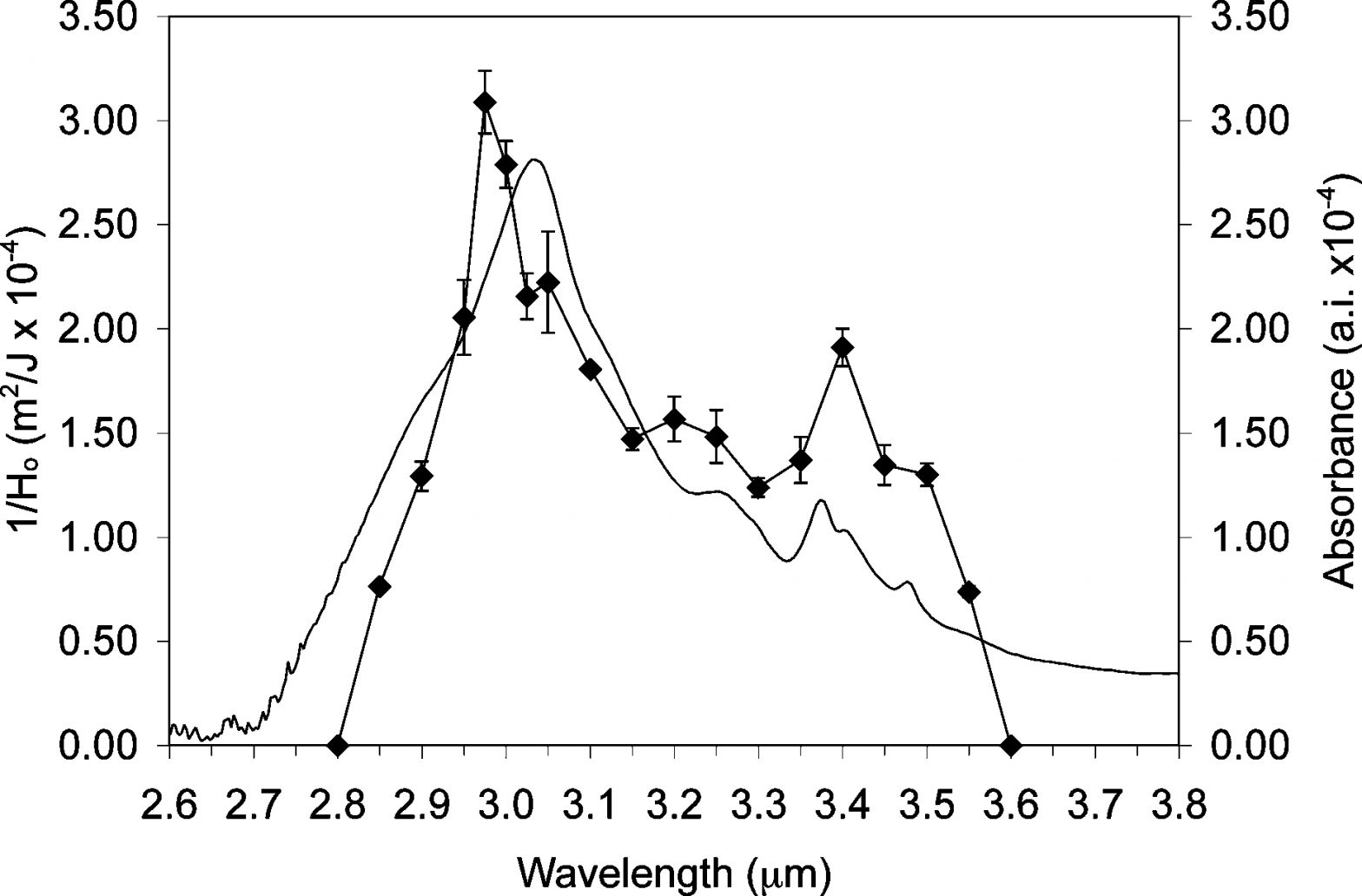M.W. Little, J. Laboy, K.K. Murray, Wavelength dependence of soft infrared laser desorption and ionization, J. Phys. Chem. C. 111 (2007) 1412–1416. doi:10.1021/jp063154v.
Abstract

Protonated insulin molecules were formed by soft IR laser desorption ionization of a thin film of the protein on a silicon surface. Time-of-flight mass spectra were recorded at wavelengths between 2.8 and 3.6 µm and the efficiency of ionization was compared to the IR absorption of the protein thin film. Ionization efficiency was quantified by recording the minimum laser energy per unit area required to produce a detectable ion signal (threshold fluence). The ionization efficiency tracks the IR absorption spectrum of insulin between 2.6 and 3.8 µm in the region of OH, NH, and CH stretch absorption. The lowest threshold fluence and therefore the most efficient ionization was nearly coincident with the OH stretch absorption of insulin near 3.0 µm. An additional local maximum in ionization efficiency was observed at 3.4 µm, coincident with the CH stretch vibrational absorption. Comparison of the ionization efficiency with the IR absorption indicates that the protein and not the residual solvent is absorbing the laser energy. Scanning electron microscopy images of the bovine insulin thin films on silicon after laser irradiation show melting and indications of explosive boiling. Ionization occurs through the sacrifice of some of the protein molecules that absorb the laser energy and act as an intrinsic matrix.

